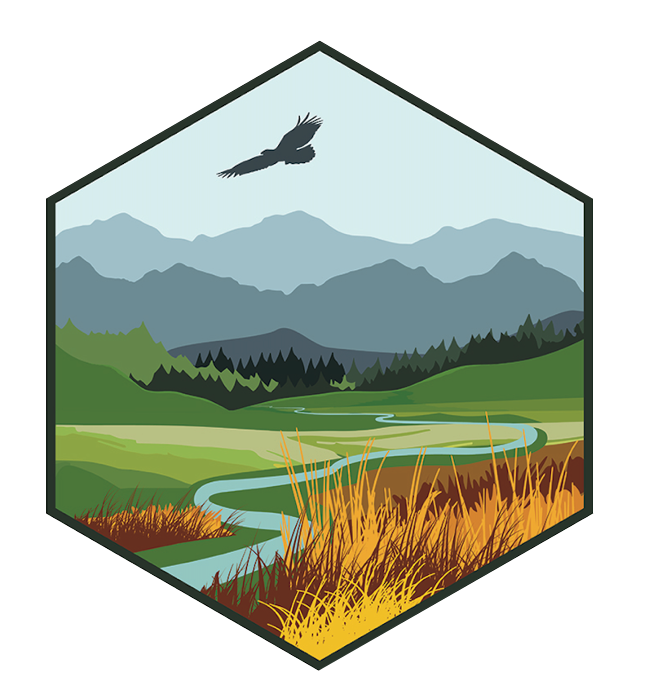Land surface phenology (LSP) products are currently of large uncertainties due to cloud contaminations and other impacts in temporal satellite observations and they have been poorly validated because of the lack of spatially comparable ground measurements. This study provided a reference dataset of gap-free time series and phenological dates by fusing the Harmonized Landsat 8 and Sentinel-2 (HLS) observations with near-surface PhenoCam time series for 78 regions of 10 × 10 km2 across ecosystems in North America during 2019 and 2020. The HLS-PhenoCam LSP (HP-LSP) reference dataset at 30 m pixels is composed of: (1) 3-day synthetic gap-free EVI2 (two-band Enhanced Vegetation Index) time series that are physically meaningful to monitor the vegetation development across heterogeneous levels, train models (e.g., machine learning) for land surface mapping, and extract phenometrics from various methods; and (2) four key phenological dates (accuracy ≤5 days) that are spatially continuous and scalable, which are applicable to validate various satellite-based phenology products (e.g., global MODIS/VIIRS LSP), develop phenological models, and analyze climate impacts on terrestrial ecosystems.
Over the last twenty years, phenology—the study of seasonal life cycle events—has emerged as a key subfield of global change biology. Phenology provides an integrated measure of the organismal response to climate change and is a key driver of the functional responses of ecosystems to climate change. Since I established the PhenoCam Network in 2008, over 200 papers have been published using Phenocam technology, and these papers have added to our understanding of phenology as both an indicator of climate variability and change and a key aspect of ecosystem function. This review examines: (1) the changing phenological research landscape, as represented by phenology-themed papers in Agricultural and Forest Meteorology (AFM), over the last 60 y; (2) the contributions of phenocams and the PhenoCam Network, as reported in the pages of AFM, to the study of phenology; and (3) the lessons I have learned from developing this grassroots effort, and how other researchers might benefit from the PhenoCam Network's successes and failures. Key conclusions to emerge from this review include: (1) the enormous, value-added power of research networks; (2) the importance of both interpersonal relationships and serendipity, in the metamorphosis of ideas into results; and (3) the potential for open, freely-available data to be transformative, in ways that cut across disciplinary, socioeconomic, and demographic barriers. Finally, the development of the PhenoCam Network has been a collaborative, multidisciplinary experiment in team science, and the commitment of my team members and the enthusiasm of my collaborators have been critical to the success of these efforts.
Managing resources under climate change is a high-stakes and daunting task, especially because climate change and associated complex biophysical responses engender sustained directional changes as well as abrupt transformations. This environmental non-stationarity challenges assumptions and expectations among scientists, managers, rights holders, and stakeholders. These challenges are anything but straightforward – a high degree of uncertainty impedes our ability to predict the environmental trajectory with confidence, and affected resources often span multiple governance jurisdictions or are subject to competing management objectives. Fortunately, tools exist to help grapple with such challenges. Two commonly used tools are scenario planning (SP) and structured decision making (SDM). SP is a well-established approach for assessing system response and facilitating decision making under a wide range of conditions that are uncertain and uncontrollable, such as those associated with adapting to climate change. However, SP lacks a defined structure for establishing objectives, quantifying tradeoffs, and evaluating the performance of candidate decisions to meet those objectives. SDM, on the other hand, is rooted in decision theory and focuses on explicit (often quantitative) assessment of the expected outcomes of choosing among a set of decision alternatives. SDM has been criticized for an inability to account for surprises and for imposing an overly narrow framing of problems to increase tractability. We discuss the strengths and limitations of SDM and SP as experienced through their application in various resource-management contexts, and then propose a new generalized framework – Scenario-Based Decision Analysis (SBDA) – that integrates these complementary approaches. SBDA structures resource management problems and solutions while considering uncertainties and surprises to inform resource management decision making.
The escalating climate and wildfire crises have generated worldwide interest in using proactive forest management (e.g. forest thinning, prescribed fire, cultural burning) to mitigate the risk of wildfire-caused carbon loss in forests. To estimate the risk of wildfire-caused carbon loss in western United States (US) conifer forests, we used a generalizable framework to evaluate interactions among wildfire hazard and carbon exposure and vulnerability. By evaluating where high social adaptive capacity for proactive forest management overlaps with carbon most vulnerable to wildfire-caused carbon loss, we identified opportunity hot spots for reducing the risk of wildfire-caused carbon loss. We found that relative to their total forest area, California, New Mexico, and Arizona contained the greatest proportion of carbon highly vulnerable to wildfire-caused loss. We also observed widespread opportunities in the western US for using proactive forest management to reduce the risk of wildfire-caused carbon loss, with many areas containing opportunities for simultaneously mitigating the greatest risk from wildfire to carbon and human communities. Finally, we highlighted collaborative and equitable processes that provide pathways to achieving timely climate- and wildfire-mitigation goals at opportunity hot spots.
As climate change facilitates significant and persistent ecological transformations, managing ecosystems according to historical baseline conditions may no longer be feasible. The Resist-Accept-Direct (RAD) framework can guide climate-informed management interventions, but in its current implementations RAD has not yet fully accounted for potential tradeoffs between multiple – sometimes incompatible – ecological and societal goals. Key scientific challenges for informing climate-adapted ecosystem management include (i) advancing our predictive understanding of transformations and their socioecological impacts under novel climate conditions, and (ii) incorporating uncertainty around trajectories of ecological change and the potential success of RAD interventions into management decisions. To promote the implementation of RAD, practitioners can account for diverse objectives within just and equitable participatory decision-making processes.
Utilizing Cultural Intelligence to Advance Tribal Engagement and Partnerships
NC CASC presents at AGU 2023
New R-Shiny Apps Now Available
Contact Us
Want to see more? Do you have feedback? Was this site helpful? Send us an email!

